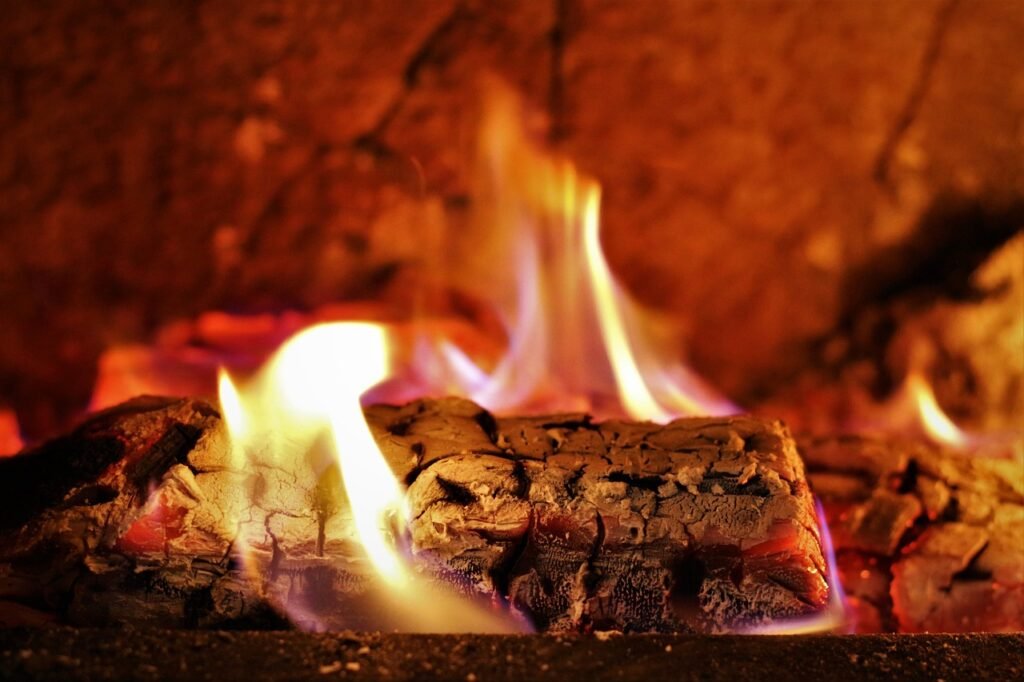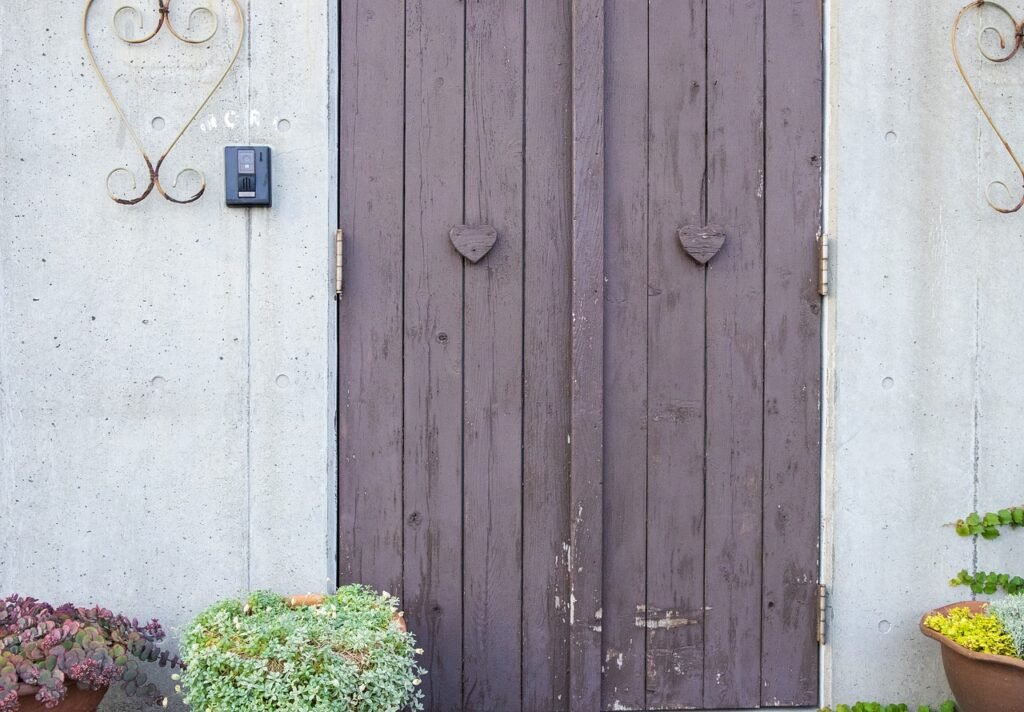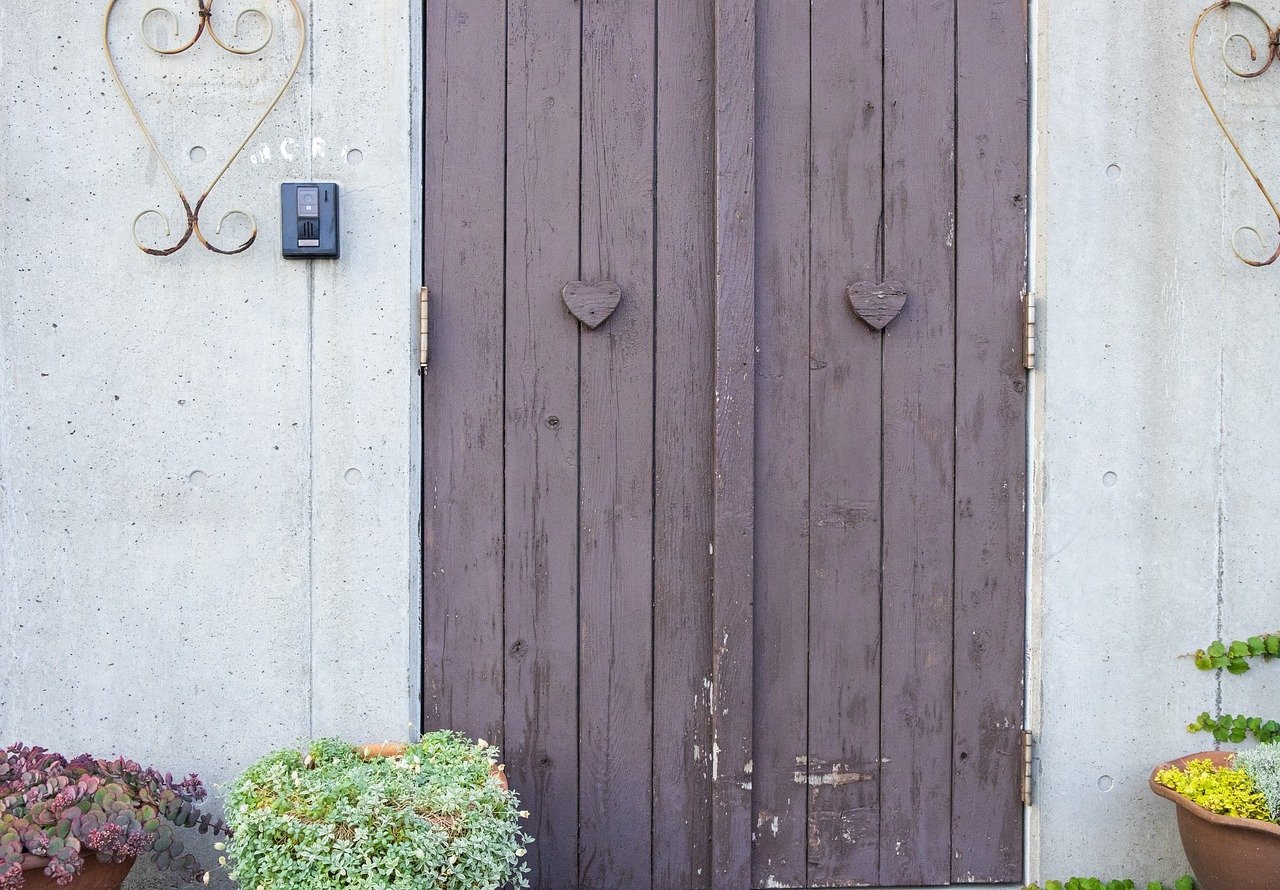Maintaining a clean and well-functioning fireplace is crucial for both the efficiency and safety of your home. In our article, “Effective Fireplace Maintenance: Essential Steps for Hearth Hygiene,” we provide you with simple yet essential steps to keep your hearth in tip-top shape. From regular cleaning to proper inspection, this guide will help you ensure that your fireplace not only enhances the aesthetic appeal of your living space but also provides a warm and cozy atmosphere for you and your loved ones. So, grab your brush and follow along as we reveal the secrets to maintaining a pristine and healthy fireplace.

This image is property of pixabay.com.
Regular Cleaning
Removing Ash and Soot
Regularly removing ash and soot from your fireplace is an essential part of fireplace maintenance. After each use, allow the ash to cool completely before clearing it out. Use a shovel or a fireplace vacuum to remove the ash from the firebox, ensuring that there are no hot embers left behind. It is important to dispose of the ash in a metal container and keep it away from combustible materials.
Cleaning the Firebox
Cleaning the firebox is another crucial step in maintaining your fireplace. Use a brush and dustpan to remove any loose debris or ash. For more stubborn stains or buildup, you can mix a solution of warm water and mild dish soap. Gently scrub the interior walls of the firebox with a soft-bristle brush, being careful not to damage the bricks or mortar. Rinse with clean water and wipe dry with a cloth.
Sweeping the Chimney
Regular chimney sweeping is vital for the safe and efficient operation of your fireplace. Over time, creosote and other debris can accumulate in the chimney, increasing the risk of chimney fires and obstructing proper ventilation. Hiring a certified chimney sweep to inspect and sweep your chimney at least once a year is highly recommended. A professional chimney sweep will thoroughly clean the flue, removing any buildup and ensuring that the chimney is free from blockages. This regular maintenance will help prevent chimney fires and maintain optimal airflow in your fireplace.
Inspecting and Maintaining the Chimney
Checking for Cracks or Damage
Regularly inspecting your chimney for cracks or damage is crucial to prevent further deterioration and ensure its structural integrity. Look for any signs of cracks, loose bricks, crumbling mortar, or other indications of damage. If you notice any issues, it is important to address them promptly to avoid more extensive repairs down the line. Consulting a professional chimney inspector or mason can provide expert guidance on necessary repairs.
Removing Debris and Blockages
It is essential to remove any debris or blockages in your chimney to maintain proper airflow and prevent chimney fires. Inspect the chimney cap or crown to ensure it is clear of nests, leaves, or other obstructions. Additionally, check the chimney flue for any accumulation of creosote, bird nests, or other debris. If you notice any blockages, contact a professional chimney sweep to safely remove them.
Sealing Gaps and Leaks
Inspecting and sealing any gaps or leaks in your chimney can prevent unwanted drafts and water damage. Check for gaps between the chimney and the roof or siding and seal them with appropriate materials such as high-temperature silicone caulk or chimney sealant. Additionally, ensure that the chimney flashing is intact and in good condition, preventing water from entering your home. Proper sealing will not only improve the efficiency of your fireplace but also protect your home from potential water damage.
Maintaining the Fireplace Exterior
Cleaning the Surrounding Area
Maintaining a clean and clutter-free area around your fireplace is essential for safety and aesthetics. Regularly remove any combustible materials, such as newspapers, magazines, or furniture, that may be too close to the fireplace. Use a soft brush or vacuum cleaner to remove dust and debris from the surrounding hearth, mantel, and any decorative items. Keeping the area clean and tidy ensures that nothing obstructs airflow or poses a fire hazard.
Inspection and Repair of Bricks and Mortar
Inspecting the bricks and mortar of your fireplace exterior is crucial to identify any signs of damage or deterioration. Look for cracked or crumbling bricks, loose mortar joints, or any other visible issues. Small cracks can often be repaired with fireplace mortar, while more significant damage may require the expertise of a professional mason. Promptly addressing any brick or mortar problems will help maintain the structural integrity and longevity of your fireplace.
Replacing Broken Tiles or Glass
If your fireplace features decorative tiles or glass, regular inspection is necessary to identify any damage or breakage. Cracked or broken tiles should be replaced promptly, ensuring a seamless and safe appearance. Similarly, any damage to the glass doors should be repaired or replaced to maintain proper insulation and prevent the risk of burns. Consult a professional if you are unsure about any repairs or replacements required for your specific fireplace design.
Ensuring Proper Ventilation
Checking the Damper
The damper plays a significant role in regulating airflow and preventing drafts when your fireplace is not in use. Regularly inspect the damper to ensure it opens and closes smoothly. Look for signs of rust, debris buildup, or damage that may impair its functionality. Properly functioning dampers prevent unwanted air intrusion and heat loss when the fireplace is not in use. Consult a professional if you notice any issues with your damper or if you need assistance in its operation or maintenance.
Inspecting and Cleaning Air Vents
In addition to the chimney, your fireplace may have air vents that require regular inspection and cleaning. Check the air vents for any obstructions, such as dust, lint, or debris, which may hinder proper ventilation. Use a soft brush or vacuum cleaner to remove any buildup and ensure optimal airflow. Clean air vents provide efficient combustion and help maintain a healthy indoor air quality.
Maintaining Clearances
Maintaining appropriate clearances around your fireplace is essential for safety and proper ventilation. Be sure to follow the manufacturer’s recommendations regarding the minimum distance between combustible materials and the fireplace. Also, ensure that there are no furniture, drapes, or other items blocking the airflow in front of the fireplace. Adequate clearances allow for proper ventilation and minimize the risk of fire hazards.

This image is property of pixabay.com.
Using the Right Fuel
Choosing the Appropriate Firewood
Using the right type of firewood is crucial for both optimal fireplace performance and minimizing the risk of creosote buildup. Hardwoods such as oak, maple, or birch are preferred due to their higher energy content and slower burn rate. Avoid using softwoods like pine or cedar, as they produce more creosote and can lead to chimney fires. It is essential to choose well-seasoned firewood, with a moisture content of around 20% or less, to ensure efficient combustion and minimize the release of harmful pollutants.
Storing Firewood Properly
Proper storage of firewood is vital to maintain its quality and ensure it burns cleanly and efficiently. Store firewood outdoors, raised off the ground and protected from rain or snow. Air circulation is essential to allow the wood to continue drying, so stack the logs loosely to facilitate airflow. Additionally, keep the firewood at a safe distance from your home and any combustible structures to minimize the risk of accidental fires.
Avoiding Unrecommended Fuels
To ensure safe and efficient fireplace operation, it is crucial to avoid using unauthorized or inappropriate fuels. Never burn household waste, treated wood, painted materials, or other prohibited substances in your fireplace. These materials can release toxic fumes, accelerate creosote buildup, and pose a significant safety hazard. Stick to approved firewood and avoid introducing materials that could compromise the performance and safety of your fireplace.
Maintaining Fireplace Accessories
Cleaning and Polishing Tools
Fireplace tools, such as pokers, shovels, and brushes, should be cleaned and polished regularly to maintain their functionality and appearance. Remove any ash or debris from the tools, and wipe them down with a damp cloth. For brass or metal tools, use a brass cleaner or a mixture of vinegar and salt to remove tarnish and restore their shine. Properly maintained tools not only enhance the aesthetic appeal of your fireplace but also ensure their longevity and ease of use.
Inspecting and Replacing Grates and Screens
Regularly inspect the fireplace grates and screens for any signs of damage or wear. Over time, grates may become weakened or warped due to exposure to high heat. Screens may develop holes or tears, compromising their ability to prevent sparks from escaping. If you notice any issues, replace damaged grates or screens promptly to ensure safe fireplace operation. Regular inspection and maintenance of these accessories will help enhance both the safety and functionality of your fireplace.
Maintaining Fire Extinguishers
Having a functional fire extinguisher near your fireplace is a critical safety measure. Regularly inspect the pressure gauge to ensure the fire extinguisher is fully charged and ready for use. Read the manufacturer’s instructions for proper maintenance and periodically have the extinguisher serviced by a professional. Additionally, familiarize yourself with the operation of the fire extinguisher and ensure that all household members know how to use it in case of an emergency. These precautions will help ensure a quick and effective response to any potential fireplace-related incidents.
Preventing and Eliminating Creosote
Understanding Creosote Build-Up
Creosote is a natural byproduct of burning wood in your fireplace. It accumulates along the chimney walls and flue lining, posing a significant fire hazard if not properly addressed. Creosote builds up in stages, starting with a soft and flaky residue, progressing to a tar-like substance, and eventually hardening into a shiny, black, and highly flammable deposit. Regular maintenance, including sweepings and inspections, is essential to minimize creosote buildup and reduce the risk of chimney fires.
Taking Precautions to Minimize Creosote
While it is impossible to eliminate creosote entirely, there are measures you can take to minimize its accumulation. Burning well-seasoned firewood, using the appropriate air vents, and maintaining proper chimney clearances are essential steps to prevent excessive creosote buildup. Avoid restricting the air supply or burning unseasoned wood, as this can lead to cooler flue temperatures and increased creosote formation. Additionally, scheduling regular chimney cleanings by a certified professional will help remove any creosote before it becomes a fire hazard.
Creosote Removal and Treatment
If you notice a significant buildup of creosote in your chimney, it is crucial to address the issue promptly. Hiring a certified chimney sweep is the most effective way to safely remove the accumulated creosote and ensure optimal fireplace performance. A professional chimney sweep will use specialized brushes and equipment to thoroughly clean the chimney flue, helping reduce the risk of chimney fires and maintaining proper ventilation. In some cases, chemical treatments may be recommended to break down and remove stubborn creosote deposits.
Safety Precautions
Implementing Smoke and Carbon Monoxide Detectors
Installing smoke and carbon monoxide detectors near your fireplace is of utmost importance for the safety of your household. Smoke detectors will alert you in the event of a potential fire, while carbon monoxide detectors will warn you of any dangerous gas buildup. Regularly check the batteries and test the detectors to ensure they are in proper working condition. These detectors provide an early warning system that can save lives and prevent potential disasters.
Installing Fire-Resistant Flooring and Protective Barriers
To protect your home from potential fire hazards, consider installing fire-resistant flooring around your fireplace. Materials like stone, ceramic tiles, or concrete provide a non-combustible surface that can withstand high heat. Additionally, installing a protective barrier, such as a fireplace screen or glass door, can prevent sparks and embers from escaping the fireplace, reducing the risk of accidental fires.
Regularly Inspecting Fire Extinguishers
Regular inspection of fire extinguishers is crucial to ensure they are in good working condition in case of a fire emergency. Check the pressure gauge and ensure the extinguisher is fully charged. Verify that the safety pin is intact and not tampered with, and inspect the hose or nozzle for any signs of damage or blockage. If you notice any issues with your fire extinguisher, have it professionally serviced or replaced to guarantee its effectiveness in an emergency.
Professional Inspection and Maintenance
Hiring a Certified Chimney Sweep
Engaging the services of a certified chimney sweep is highly recommended for professional inspection and maintenance of your fireplace. Certified chimney sweeps possess the necessary knowledge and expertise to identify any issues and perform thorough inspections. They will ensure that your chimney is free from blockages, assess the condition of the chimney components, and provide expert advice on necessary repairs or replacements. Hiring a professional ensures that your fireplace is safe, properly maintained, and operating at its best.
Annual Inspections and Cleanings
To ensure the ongoing safety and efficiency of your fireplace, schedule annual inspections and cleanings by a certified chimney sweep. Regular maintenance helps identify any potential hazards, such as cracks, blockages, or creosote buildup, and tackles them before they become serious issues. A comprehensive inspection and cleaning will provide peace of mind, knowing that your fireplace is working as it should and poses no risk to your home or family.
Repairing or Replacing Damaged Components
During professional inspections, chimney sweeps may discover damaged components that require repair or replacement. Cracked chimney caps, deteriorated flue liners, or damaged chimney crowns are examples of common issues. It is essential to address these problems promptly to avoid further damage and to maintain the safety and functionality of your fireplace. A certified chimney sweep can guide you on the necessary repairs or replacements to ensure your fireplace is operating at its best.
Fireplace Usage Guidelines
Proper Lighting and Operating Procedures
To ensure safe and efficient use of your fireplace, follow proper lighting and operating procedures. Use only recommended fire starters, such as newspaper or dry kindling, to start a fire. Avoid using accelerants like gasoline or lighter fluid, as they can cause dangerous flare-ups. Once the fire is lit, keep the damper open and monitor the fire to ensure it burns evenly and safely. Avoid overloading the firebox with excessive wood, as this can lead to poor combustion and increased creosote buildup.
Adhering to Safety Clearances and Guidelines
It is crucial to adhere to safety clearances and guidelines to prevent accidental fires and ensure optimal airflow. Follow the manufacturer’s recommendations regarding the minimum distance between the fireplace and any combustible materials, such as furniture or curtains. Maintaining proper chimney clearances and avoiding obstructions in front of the fireplace are also essential for safe and efficient operation. By adhering to these guidelines, you can enjoy your fireplace while keeping your home and loved ones safe.
Avoiding Unattended Fires
Never leave a fire burning unattended in your fireplace. Ensure that the fire is thoroughly extinguished before leaving the room or going to bed. Use a fireplace screen or glass door to contain sparks and embers within the fireplace, reducing the risk of accidental fires. Practice responsible fire safety habits and always exercise caution when using your fireplace to minimize potential risks.
Regular maintenance and proper usage of your fireplace are essential for its safety, longevity, and optimal performance. Implementing these steps for effective fireplace maintenance will help you enjoy cozy evenings by the fire while ensuring the well-being of your home and family. Remember, when it comes to fireplace maintenance, a little effort goes a long way in maintaining a warm and inviting ambiance in your living space.




